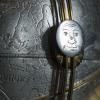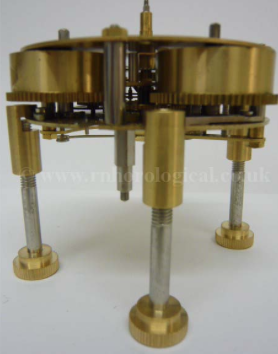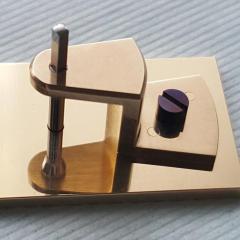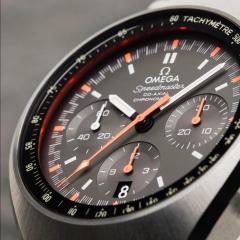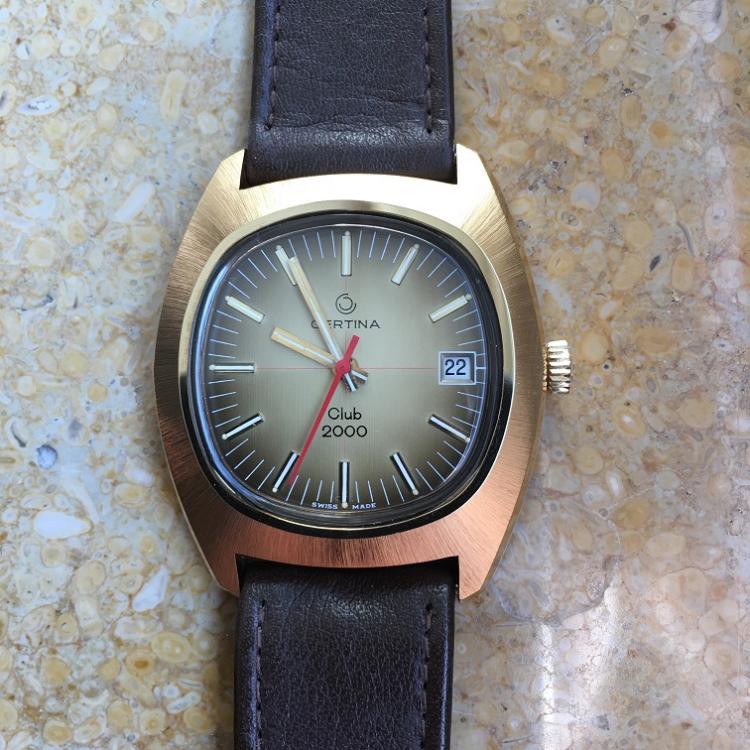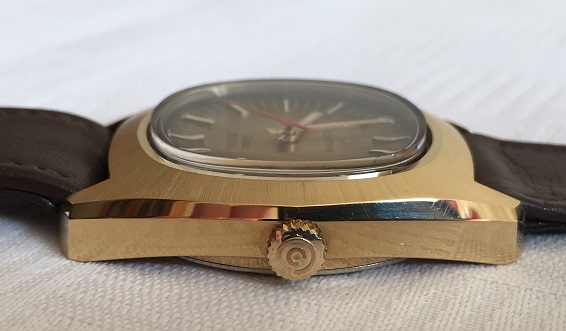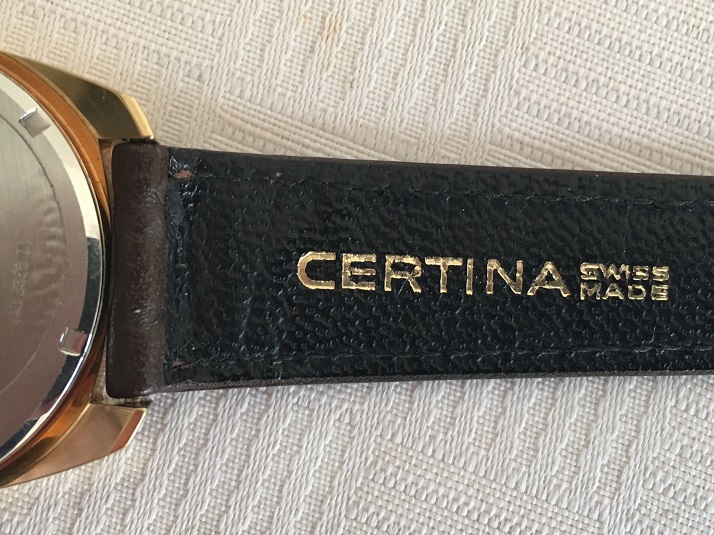Leaderboard
Popular Content
Showing content with the highest reputation on 11/02/17 in all areas
-
This is very strange that it's being denied, as has been said buffing is an established known effect and practice, I admit I don't know all the theory and it is impressive that it's possible, but it clearly is, I've personally observed it in how the shape of the surface has changed, never been tempted to get out a calliper, would feel as necessary as needing evidence to the sky being blue, I can see it. Exact same thing. For what it's worth you would only need to heat the uppermost top layer to the necessary heat, even just getting a micron or 2 of steel to whatever is the necessary temperature would allow this process to happen, if slowly, (and my buffing is usually a patient, gradual process) and that temperature is most certainly not 1,500: the melting point of steel, steel would become annealed and be pliable to being slowly moved under a rapidly moving felt wheel, pressed against it, much sooner than that. theoretically starting about 700, which still sounds ridiculous until you remember you're only maintaining a micron or 2 of steel at this temperature at the time, and that heat rapidly displaces into the rest of the case, and let me tell you the case gets hot enough that I can easily believe it, I've burnt myself more than once when I've worked something a little too long without break.2 points
-
I am having trouble with this notion of moving the metal, can you expand upon the mechanism? I certainly don't know everything, but I know enough engineering and metallurgy to be very suspect of the claim. Abrasives, including fine ones like rouge are cutting tools and remove material in a chip formation process and there is no mechanism to reattach said material. Metal only moves if heated to the point where it flows, or if enough force is applied for plastic deformation. There is no way there is enough heat (1500 C needed) or forces involved for either. I would love to see quantitative proof - say, a piece that with proper metrology equipment that could be shown to have be made thicker in a spot by polishing.2 points
-
French striking clocks mainly have two types of striking, rack and count wheel, the count wheel tends to be on the outside of the back plate. After removing the hands and dial from the movement, you need to let the power down on both sides, you can do this using the key and open the click from the click wheel in stages until all power is down. These movements are made of a high standard of brass and steel, if you are not familiar with this type take notes and photos of where the parts go, it’s the strike side you need to pay attention to the wheels with pins. Everything that comes apart take apart, do not touch or remove the fan adjuster. As someone has said, keep the barrels separate from each other. Normally these movements just need polishing and cleaning, some need re-bushing, so check the pivots. If the pivots are worn, you will need a lathe to make good. All brass parts should be polished and all screws should be cleaned up and polished using needle files and emery again a lathe is normally used, you can do this by hand but it’s a bit of a hit and miss. The screws are then blued and quenched in oil, using oil gives them a nice shine. Polishing the brass, I always used brasso, apply brass to a soft brush, and use a soft cloth when polishing the plates and other plate parts and pendulum. All parts when polished and washed out are then dried. I used fine sawdust. Then all brass parts are chalked brushed using French chalk and a clean chalk brush. Depending on your skills when it comes to re-bushing you might like to make your own or you might buy the already made ones. Make sure all pivots are in good order and burnished. Remove any burr from the two arbors and polish the ends that show in the key holes. If you need any help just ask, I expect I have missed something.2 points
-
Ishima, I don't think Measuretwice is in doubt about the final outcome. It is clearly working for you. What he does doubt (as do I) is that you are "moving" stainless steel surfaces at low melting points. As a jewellery designer that works with silver and gold, I can move that metal with various compounds. With stainless however, I NEED to take down that metal to remove scratches or weld heavy dings and holes and refinish. I really need to see this technique in action to believe it. Can you upload a video on YouTube and send a link? I'm always curious about finishing so you've got my attention. [emoji16] Sent from my SM-G935F using Tapatalk1 point
-
It is not that easy for us to confuse. The changes we see in the metal we carefully work and check and watch all throughout is consistent with metal being moved, and would be inconsistent with metal being removed, it informs our entire approach when doing it, if it weren't accurate we simply wouldn't get the results we expect, and yet we do. I also believe there's an absence of data on the forces of buffing wheels, which makes theorizing with any accuracy impossible. Thank you.1 point
-
This looks like it has a cylinder escapement. You will find a few threads about those on here. I haven’t seen all of Mark’s videos, but I doubt there are any covering the issues you will encounter. First is that when you remove the balance cock and balance, any residual power in the mainspring will be released. Carefully wedge a piece of folded tissue paper into the train to prevent this it’s ok to let the wheels turn slowly, but at speed you may break or damage a pivot. Second, I don’t see a screw on the hairspring stud. It looks like the cap jewel is screwed on from the outside so you may be able to remove this to clean without separating the balance from the cock. If not you will either have to press the stud out, which is a bit fiddly if it’s tight, or you could unpin the hairspring from the stud, but you need to note the pinning point carefully for reassembly. Third, you will need to ensure you carefully scrape out any dried oil from inside the cylinder with some shaped pegwood... without damaging the hairspring, balance wheel or pivots. Apart from that, it should all be straightforward, but don’t be afraid to ask questions!1 point
-
1 point
-
The metal isn't going to flow at 700C, not stainless anyway. The metal will move if its in either a molten state where they flow as a liquid, or it receives enough force (plastic deformation). Even red hot on the anvil, it doesn't flow without a substantial force. imo the explanation for the discrepancy is that it would be difficult distinguish between how between material miraculously moved material to fill in scratch or just material formed around the scratch being removed by buffing such that things are now at the same level. Somebody says the metal is moving and others accept it. That buffing works and there is no scratch is not evidence that material has been moved. If what you say is as clear as the clear blue sky, can you take a piece of material and make it measurably thicker in a spot by buffing? (heat expansion not included) If so, I'll be quiet1 point
-
1 point
-
I agree. There is no way of physically "moving" stainless steel unless under extremely high temperatures. Even friction heat under a hard polishing mop doesn't come close. Sent from my SM-G935F using Tapatalk1 point
-
yeah, I had seen that video awhile ago. I don't think there is anything there indicating material had moved other than his claim of it . I think he's very skilled but that doesn't mean the metallurgical explanation is accurate. I was glad to see it raised here as it is so against the grain of engineering and metallurgy I was hoping for something more on why its "proven" or even how its suppose to work. I confess I don't believe it and I've done lots of buffing, but if its true there should be proof or even a good scientific explanation and I will admit the errors of my ways. If the claim is you're moving material about by buffing , are you able to take a piece and make it thicker in a spot and measure it? That would be very compelling if so1 point
-
I will not launch myself into offering theoretical explanations or trying to prove what is well know already. All I can say is that even if I was doubtful at first, it works. Watch the video above and/or try yourself, it's actually very easy.1 point
-
You actually counted my posts? Quality my friend... Not quantity. Sent from my SM-G935F using Tapatalk1 point
-
1 point
-
I'm not even sure myself, but I saw a listing which said it's probably an old watch timing machine, but when I looked at the pics and the French labels I thought it looked more like a watch cleaning machine. It could be of course some cobbled together Heath Robinson affair. It could be of course a complete waste of money and not likely to ever work doing whatever it was built to do again. I'll know more when it arrives! But, I thought to myself, who better to ask than the hive mind here who have had every type of contraption imaginable in their workshops at one time or another. So your starter for 10 (and lots of conferring!)...1 point
-
If you want to remove heavy scratching from steel, it's absolutely necessary. I've been doing it for years. How can you possibly just shine over scratches! Are you saying companies like Rolex, Richard Mills and Patel Phillips never grind away scratches before polishing? Let me tell you that they do as I've worked with them. Sent from my SM-G935F using Tapatalk1 point
-
The watch is typical of a late Victorian era 1880-1900 centre seconds chronograph, not a true chronograph because although the centre seconds hand can be stopped with a aid of a lever on the side of the watch, this stops the balance from running thus stopping the centre seconds hand. A true chronograph watch would allow the stopping and resetting of the centre seconds hand without stopping the balance and interfering with the time keeping of the watch but these compared to the watch you have would have been very expensive and beyond the reach of most. The case is probably brass that is nickle plated and in some cases these watches have markings that appear at first glance to be hallmarks and where intended to give the impression that the case was made of silver, much in the same way that E.P.N.S items where often marked at the time.. I would not think that the 13 stamped on the case would refer to the year of manufacture as 1913 I think would be too late a date for this watch.1 point
-
Hah, I noticed the same at the awards ceremony last weekend (my first time there), but I knew that would likely be the case anyway. I think they're aware of their advanced average age, and they're very keen to attract younger members. I'm doing the DLC just because I have no other means to learn (besides internet and books), and I think it's a fun course. Like any education, there may be parts of it you don't like. I never had any interest in quartz watches and clocks, but discovered that high-end (non-junk) quartz watches are OK, and clocks are great. I had technical drafting nightmares from school days, but actually enjoyed CAD escapement drawing (year 2). And yes, the first few units are about metalworking skills. If you're already good at that, then it's easy for you, but the course targets beginners. If you never plan to make new parts at all then maybe this course it not for you. For the technician exams you will need to make a fictitious clock part. Did you ask the BHI for a few sample lessons? I do agree with you that it can be hard to find out detailed information about the DLC, exam procedures etc. I'm doing everything from afar, which makes the procedures (invigilator, etc) even more complicated. You mention £600, but that won't be enough. Exams are £120 apiece these days, and there's three for the technician grade. If you think you're good enough, you can always just start taking in customer work, and build up a critical mass of clients. Or buy, fix and sell watches on eBay. When you're established with a good reputation, nobody will care about your qualifications anyway. Cheers! Rob1 point
-
1 point
-
My cat knows its not allowed on the bench top, but she jumps up there anyhow, but always jumps up on the far side of the bench away from me so I have to get up and walk over to her and pick her up and carry her to somewhere else/ I'm sure she thinks it is a game.1 point
-
1 point


